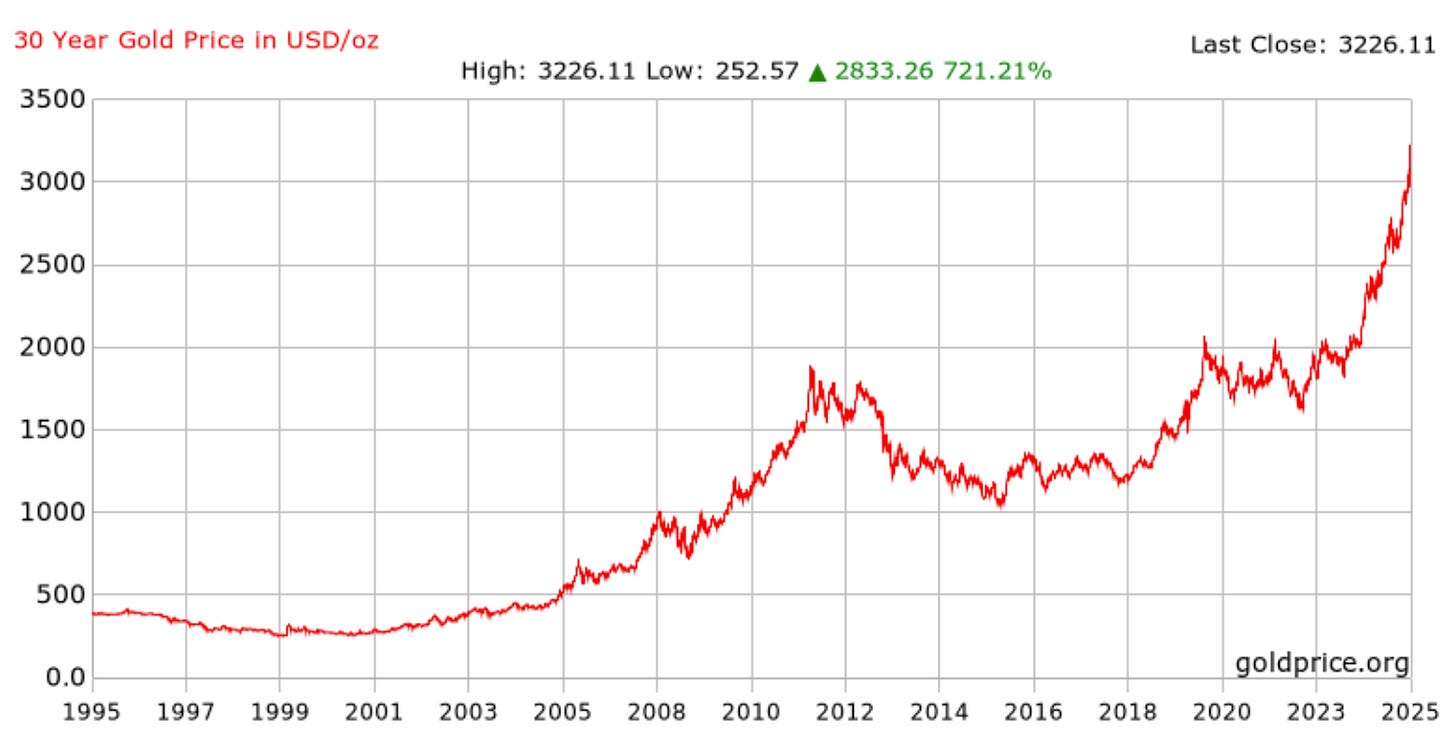What's up with... tariffs and gold prices?
We talk about the bright, shiny precious metal and the impact on its prices due to tariff shock the world is witnessing
We're starting a segment where we'll explain how things move and what affects them. We'll bring this up whenever it's useful, so it won't be a regular series. If you like this segment, let us know what you would like to know more about and we’ll do our best to explain you in the language you can understand.
The world quickly got caught up, reacted, even demonstrated, and are eventually back to their work desks after Trump rocked everybody's world with reciprocal tariffs. Everybody’s immediate response was that this is the final nail in the coffin for the world economy and everybody has to now gear up for recession or worse, world war.
We have seen, experienced and studied the situations of wars and recessions earlier. We have a slightly fair idea of what moves when things turn ugly. And history tells us that when nothing else works - gold does - because the bright and shiny precious metal is a store of value. But this time, gold went down too…
Notice how gold prices suddenly fell immediately after the tariff announcement on April 2. Honestly, this is new for us as well. It kept us wondering how and why would a safe haven asset like gold take the same route as our equity and mutual fund portfolio?
Simple logic tells us that Trump’s announcement of tariffs will make things more expensive for US companies and citizens, which will lead to lower demand from the world’s largest customer in terms of countries and result in recession. Going a step forward, if the world starts to consider this step of US as bullying, the tide might just turn against the US and things might escalate to take an uglier form of war.
As for the history of gold prices, see how gold has increased during 2008 crisis and then continued its run until 2014. We all sure remember the 2008 crisis, but the aftermath was nothing short of concerning.
Between 2008-09
At the most basic level, there was a fear of another wave of recession as all economies had weakened. Another wave would’ve made not just businesses, but countries go bankrupt that lead to governments falling, large scale chaos, inflation spiralling over 100% (think how would you feel exchanging one bag of currency notes for one bag of rice).
Between 2010-2013
There was extreme uncertainty in terms of policy. Even if the policymakers were clear in their actions, there was always second guessing from everyone else as no one knew what would work. Consequently, businesses were averse of taking risks with new investments, hiring or even increasing production.
Due to continued high levels of unemployment, families were hesitant to spend more and preferred keeping money to themselves. The quantitative easing (click if you don’t know what it means) by the central banks already meant there was more than enough money supply in the market which had to be controlled to make sure government budgets stayed in their limits.
The gold prices finally tapered when the world was sure that they are back on track in 2013-14.
Also, we see another spike during Covid - which continues to rise to date - as the world has not yet seen stable environment. After few waves of lockdowns, Russia-Ukraine war took place, there were several rounds of wars in the Middle East involving Israel, Hezbollah and Iran. The interest rates across the globe remained consistently high due to rising uncertainties of recession, wars and now, we are witnessing tariffs.
In such times, if not gold then what? What are we missing?
These are some potential reasons of why the gold prices reacted like they did -
Profit booking
A significant selloff in the equity markets led to people either squaring off their positions at a loss or adding some more to continue their bet. In both cases, they needed more money to cover their position which they got by selling gold. This was either because they wanted more liquidity to square off their positions or wanted to maintain their margins to play further.
Exemption of gold from tariffs
Gold bullion was explicitly exempted from the reciprocal tariffs. This decision removed a potential cost push inflation that would have arisen from increased import duties on gold.
Strengthening of the US dollar
This is one of the biggest reasons why the gold prices fell. The strength of the USD plays a vital role in pricing of gold because gold is always denominated in USD. A stronger USD generally exerts downward pressure on gold prices, as gold is denominated in USD and becomes more expensive for investors holding other currencies.
Moreover, expectations of interest rate decisions by US FED also have an impact on gold prices. Lower interest rates typically make gold more attractive whereas rising interest rates can diminish its value.
Conclusion
In the long run, gold was and continues to be a safe haven in the times of uncertainty. The 90 day pause on tariffs does give countries enough time to prepare for post tariff scenario or to negotiate with US for favourable terms. However, China has started retaliating against the US tariffs and we need to see where and how this ends.
If you like this idea of ‘What’s up with’ series, let us know by liking or leaving comments.






Very Informative